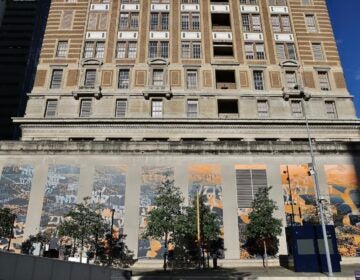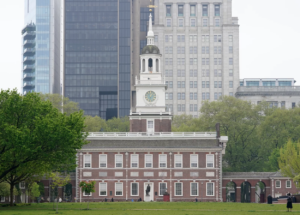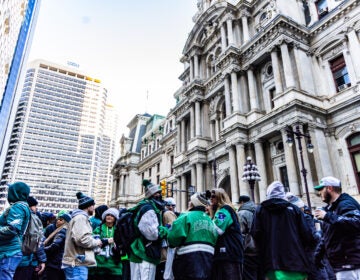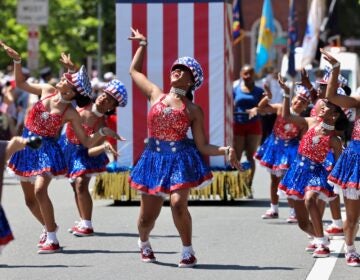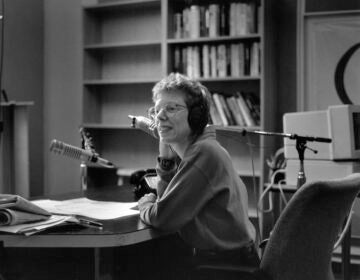WHYY to preview Ken Burns’ new ‘American Revolution’ documentary in Camden
WHYY’s Terry Gross will interview Ken Burns about his 12-hour film premiering in November, during a preview event in Camden on Oct. 9.
Listen 1:45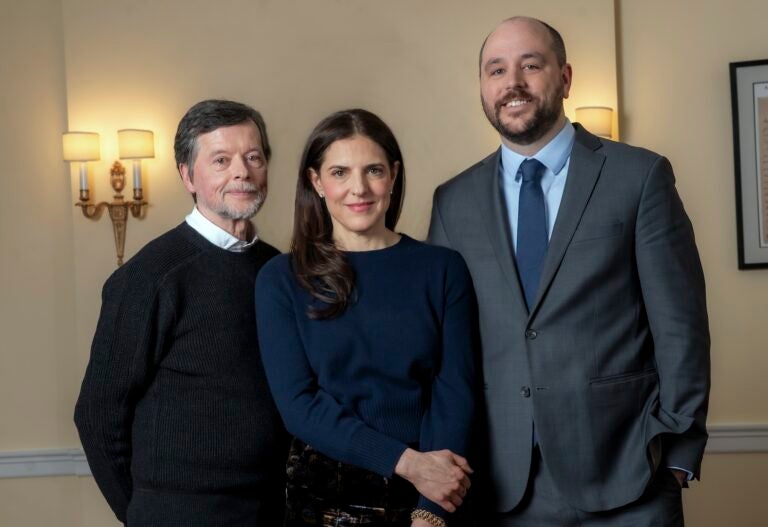
Filmmaker Ken Burns with "The American Revolution" co-producers Sarah Botstein and David Schmidt. (Courtesy of PBS)
From Camden and Cherry Hill to Trenton and the Jersey Shore, what about life in New Jersey do you want WHYY News to cover? Let us know.
Americans, and Philadelphians in particular, might think they know a lot about the American Revolution. We watched cartoons about it on Saturday mornings, celebrate it annually with fireworks and, in Old City, we are surrounded by the historic sites that gave birth to the United States.
But documentary filmmaker Ken Burns says you don’t know the half of it.
“Our Revolution is smothered in gallant, bloodless myth,” Burns said.
“The main figures are just marble statues. We don’t know all of the hundreds of subsidiary characters that make up this story,” he said. “From young kids volunteering to fight, to Loyalists, to German Hessian soldiers, to Native Americans, to enslaved and free Africans, to poor working men, to women. They’re central to this.”
Burns and his filmmaking partners Sarah Botstein and David Schmidt have spent the last 10 years crafting a 12-hour documentary series, “The American Revolution,” premiering on WHYY-TV and other PBS television outlets beginning Nov. 16.
Burns will give a sneak peak of the film on Oct. 9, showing excerpts from all six episodes at the Freedom Mortgage Pavilion in Camden, New Jersey, where he will be interviewed live on stage by Terry Gross of WHYY’s “Fresh Air.”
The free event with prior registration is part of a weekend of activities marking the 250th anniversary of the United States Navy and Marine Corps. The Continental Navy, which ultimately became the naval branches of the American armed forces, was established in Philadelphia in 1775.
The Navy 250 Homecoming celebration is seen as a precursor to the 250th anniversary of the Declaration of Independence next summer.
Burns said the fact that his documentary film is rolling out on the eve of the semiquincentennial is a coincidence he did not plan when he started in 2015.
“The urgency comes from our own curiosity, not from any external political exigencies that may be going on,” he said. “The semiquincentennial was on no one’s mind. Not mine, not anyone else’s. We got in several years working on the project and thought, ‘You know? We’re going to finish sometime in ’25.’”

The details of the American Revolution have been picked over by historians for 250 years. Every generation of writers brings more insight into the war fueled by new approaches and historic discoveries. Botstein said her work with Burns takes viewers through a complex story to evoke a feeling that we might not know its outcome.
“There’s so much popular mythology about the topic and actually very little real understanding of what happened,” she said. “It was a world war as much as a bloody civil war. The Declaration of Independence and the Constitution are two documents very far apart in time. A lot of people died and a lot of violence happened between those two things.”
“The American Revolution” documentary begins well before the proverbial “shot heard ‘round the world” at Lexington and Concord in 1775 and continues well after the war’s conclusive Battle of Yorktown in 1781. Burns said the action started in a previous war, the French and Indian War, aka the Seven Years’ War (1754-1763) fought by England and France over claims to American territories. That set the stage for the later Revolution.
That was also the time Benjamin Franklin proposed the American colonies form themselves into a unified confederacy of states modeled on the five native tribes that formed the Iroquois Nation system of governance.
“It’s the first nascent idea of the beginning of the United States of America union that fails miserably because no colony wants to give up any of their autonomy,” Burns said. “But he’s inspired by Native American democracies and other forms of union to argue for that.”
The film explores both the heroism and failures of the revolution, as well as its mess. Both George Washington’s Continental Army and William Howe’s British army had to not only contend with their recognized enemy, but an amorphous American population that could be ambiguous about which side they favored. Both generals started out with the assumption that they could count on a certain amount of support from the populace, and both came away disappointed.
The war turned neighbor on neighbor. Burns said more civilians were killed in the Revolutionary War than in the Civil War nearly a century later.
“It really is a civil war,” he said. “In every community there are loyalists and patriots and disaffected people just trying to keep their head down and stay out of trouble, which means that they are suspect by both the loyalists and the patriots. There are terrorist organizations that are killing loyalists, and there are terrorist organizations that are killing patriots.”
These stories of Americans turning on Americans are often downplayed in popular histories for their potential to sully an otherwise heroic revolution.
“The ideas are so big that are happening in Philadelphia that we think that if we were to sort of let the cat out of the bag, we would somehow diminish those ideas,” Burns said. “Those ideas are made even more inspirational by the odds, by just the sheer improbability of these new ideas becoming the greatest country on Earth.”
“That’s one hell of a story,” he said.

Get daily updates from WHYY News!
WHYY is your source for fact-based, in-depth journalism and information. As a nonprofit organization, we rely on financial support from readers like you. Please give today.



